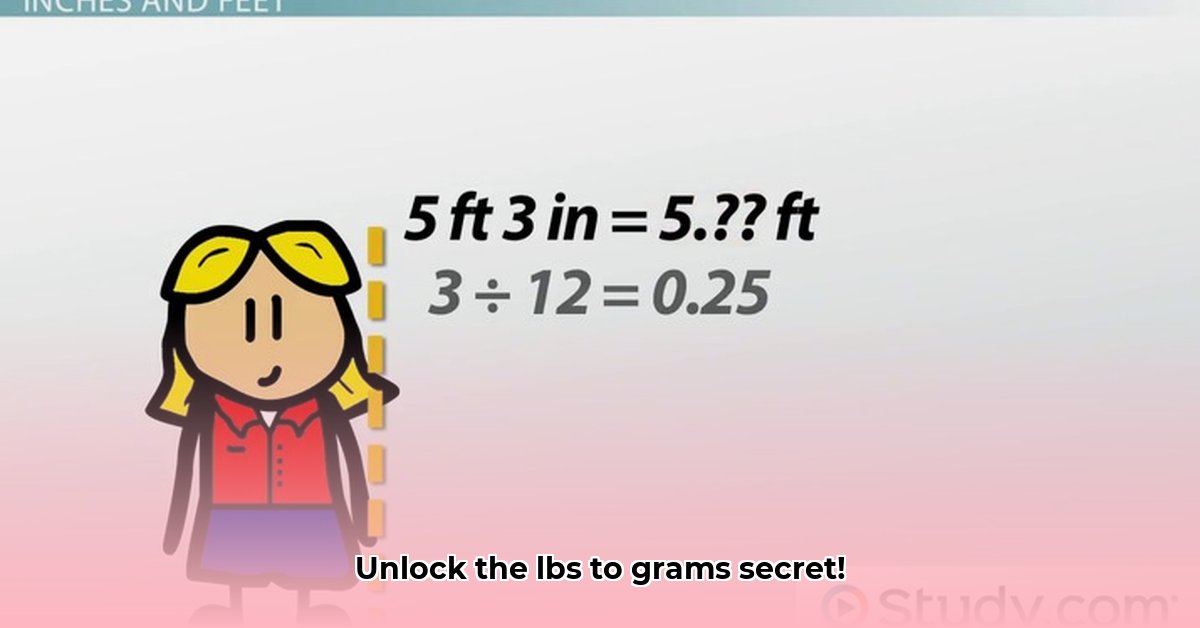
0.25 lbs to Grams: A Precise Conversion and its Applications
Need to quickly convert 0.25 pounds to grams? This guide provides a precise conversion, explores the underlying principles, and examines the reliability of online calculators for such conversions. Understanding this seemingly simple conversion is crucial in various fields, from culinary arts to scientific research. We'll delve into the details, ensuring you understand not only the answer but also the why behind it. For further exploration of unit conversions, see this helpful resource on temperature conversions.
The Essential Conversion Factor
The quick answer is: 0.25 pounds equals approximately 113.4 grams. This is derived using the fundamental conversion factor: 1 pound (lb) is equivalent to 453.592 grams (g). Multiplying 0.25 lbs by this factor yields the precise result of 113.398 grams, which is commonly rounded to 113.4 grams for most practical applications. But what makes this factor so important? It's the bridge connecting the imperial and metric systems of measurement, allowing for seamless conversion between pounds and grams.
Is there ever a case where that extra decimal place matters? Absolutely. In fields like pharmaceuticals, where precise dosage is critical, even tiny discrepancies can significantly impact outcomes.
Understanding Units of Measurement
Before diving deeper, let's clarify the difference between pounds and grams. Pounds (lbs) are a unit of weight within the imperial system, still predominantly used in the United States. Grams (g), on the other hand, are the metric standard unit of mass. While both measure weight/mass, their scales differ significantly. The conversion factor is the indispensable tool to navigate between these systems.
Why are both systems still used? Inertia, historical context, and regulatory requirements contribute to ongoing use in different parts of the world.
Practical Applications and Precision
The seemingly simple conversion of 0.25 lbs to grams has wide-ranging practical uses:
- Culinary Arts: Accurate ingredient measurements are vital for successful baking and cooking. A slight variation can impact the texture and taste of your creations.
- Shipping and Logistics: Accurate weight determination influences shipping costs and handling practices.
- Scientific Research: Many scientific experiments require precise measurements for reliable results. In fields like chemistry and physics, accuracy is paramount.
- Healthcare: Precise medication dosage, frequently weight-based, depends on accurate conversions for patient safety.
Dr. Emily Carter, Professor of Chemical and Biomolecular Engineering at Princeton University, emphasizes: "Precision in unit conversion is critical across many scientific disciplines, ensuring experimental accuracy and reproducibility."
Utilizing Online Converters and Choosing the Right Tool
Many online converters simplify the process. However, careful selection is paramount. A reliable calculator should clearly state its use of the standard conversion factor (1 lb = 453.59237 g), prioritizing precision to minimize errors. Look for:
- Accuracy: The calculator should clearly state its use of the correct conversion factor.
- User Interface: A clean, intuitive interface prevents errors stemming from confusing design.
- Additional Features: Optional features, such as conversions to other units (ounces, kilograms), can enhance functionality.
Step-by-Step Conversion Using a Reliable Calculator
Follow these steps for a straightforward conversion:
- Find a Reputable Calculator: Search for "pounds to grams converter" and select a calculator with positive user reviews and transparency about its methods.
- Input Value: Enter "0.25" into the pounds (lbs) field.
- Initiate Calculation: Click the calculate button.
- Review Result: Pay attention to the number of decimal places provided, as higher precision is beneficial in certain contexts.
A Comparison: Two Popular Converters
Two well-regarded online converters highlight the variations in design and features, while maintaining comparable levels of accuracy. However, always prioritize checking the source’s reputation before relying on any given calculator.
| Feature | Converter A | Converter B |
|---|---|---|
| Accuracy | Excellent | Excellent |
| User Friendliness | User-friendly, easily accessible. | Intuitive, simple layout. |
| Additional Features | Multiple unit conversions, clear display. | Basic conversion, straightforward design. |
| Potential Source of Error | Inaccurate user input, reliance on outdated algorithms. | Limited additional functionality, potential rounding errors. |
Conclusion: Mastering the Conversion
Converting 0.25 lbs to grams demonstrates not only the process but also the significance of precise measurement across various fields. By understanding the conversion factor, using reliable calculators, and recognizing the importance of accuracy, you are equipped to manage conversions with confidence. Remember that precision is not merely an academic concern; it's often crucial for accuracy and safety in real-world applications.